Introduction
Are Pink Pigeons Real: Pink pigeons, a whimsical notion that might initially sound like a creation of fantasy, are indeed real and inhabit the enchanting island of Mauritius. Contrary to the common perception of pigeons as mundane urban birds with dull, gray plumage, pink pigeons captivate observers with their unique and vibrant coloration. These birds, scientifically known as Nesoenas mayeri, are a critically endangered species, making them not only fascinating but also emblematic of the conservation challenges faced by numerous wildlife species around the globe. The story of pink pigeons extends beyond their distinctive appearance, intertwining with the broader narrative of biodiversity preservation and the delicate balance between human development and the survival of unique and often overlooked species.
Native to Mauritius, the pink pigeon has faced a tumultuous journey towards survival. Once on the brink of extinction, concerted conservation efforts have been implemented to safeguard this captivating species. The pink pigeon’s existence serves as a poignant reminder of the impact human activities can have on fragile ecosystems, but it also stands as a beacon of hope, illustrating how collaborative initiatives and dedicated conservation work can reverse the trajectory of endangered species. Exploring the reality of pink pigeons unveils a narrative that goes beyond their striking appearance, delving into the complex web of ecological interdependencies and the ongoing struggle to preserve the biodiversity that enriches our planet.
As we delve into the captivating world of pink pigeons, it becomes evident that these birds are not mere curiosities but rather ambassadors for the broader conversation on environmental stewardship. Their existence hinges on the delicate balance between human actions and the survival of unique, often overlooked species. Are pink color pigeons real? Absolutely, and their reality encompasses not just a distinctive hue but a profound story of resilience, conservation, and the shared responsibility we bear to protect the diverse tapestry of life on Earth.
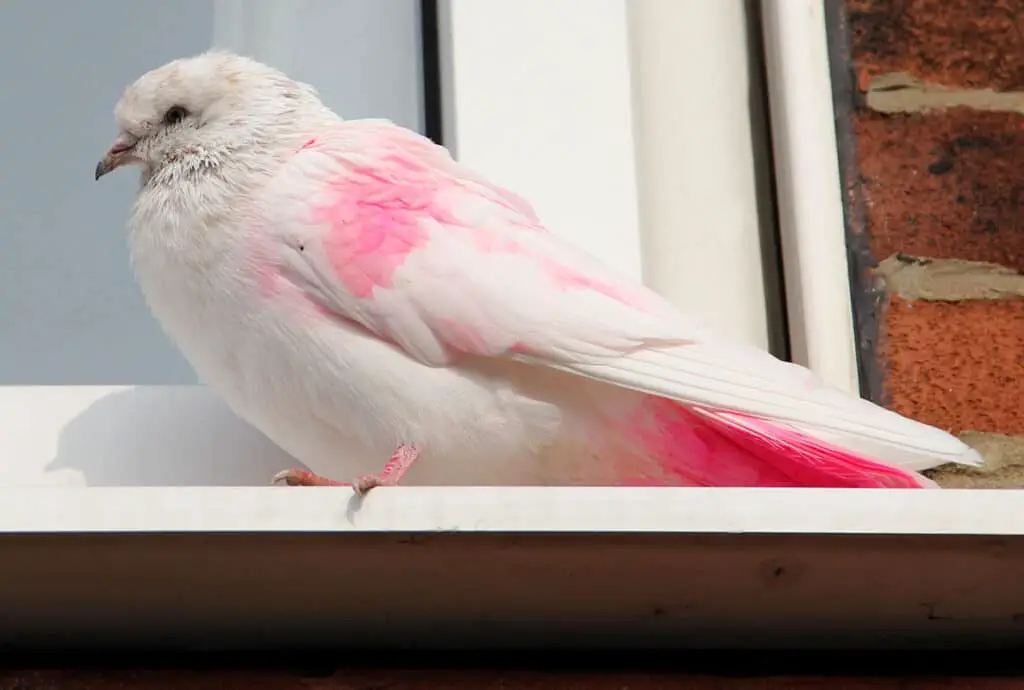
Can pigeons be naturally pink?
The pink pigeon is a mid-sized pigeon similar to the common pigeon found in cities around the world. It sports light pink feathers on its body, as well as a dark pink bill, legs and feet.
To elaborate further, the Mauritius pink pigeon is native to the island of Mauritius and is known for its distinctive appearance. Their pale pink coloration is particularly prominent on the chest and underparts, creating a striking contrast to the typical gray or dull colors associated with pigeons. The exact reasons for this unique coloration are not fully understood, but it is believed to be influenced by a combination of diet and genetic factors.
In the wild, these pigeons feed on a variety of fruits, seeds, and vegetation, and the pigments from these foods likely contribute to the pink coloration of their feathers. Genetic factors within the population may play a role in determining the intensity of the pink hue. Conservation efforts have been crucial in protecting the Mauritius pink pigeon from extinction, as habitat loss and introduced predators had pushed them to the brink. The fact that these pigeons have made a comeback with targeted conservation efforts is a testament to the importance of preserving both the species and the ecosystems they inhabit.
How rare is a pink pigeon?
According to the IUCN Red List, the total population size of the Pink pigeon is around 375-490 individuals. Currently, this species is classified as Vulnerable (VU) on the IUCN Red List and its numbers today are stable.
The pink pigeon (Nesoenas mayeri) is considered critically endangered, and as such, it is one of the rarest pigeon species in the world. This status is primarily due to habitat loss, predation, and other human-induced factors that have significantly impacted its population. Endemic to the island of Mauritius, the pink pigeon faced a severe decline in numbers, reaching a critical point where its survival was seriously threatened.
Conservation efforts have been instrumental in preventing the extinction of the Mauritius pink pigeon. Intensive breeding programs, habitat restoration, and predator control have been implemented to boost their numbers and protect their natural environment. Despite these efforts, the pink pigeon remains a rare and endangered species, underscoring the ongoing challenges faced by many wildlife populations in an increasingly human-dominated world.
The rarity of the pink pigeon serves as a reminder of the fragility of certain species and the importance of sustained conservation initiatives to ensure their survival. It also highlights the broader issue of biodiversity loss and the need for global efforts to protect and preserve the rich tapestry of life on Earth.
How can pigeons be pink?
It turns out, the simplest theory is also the truth: Someone (or multiple someones) is dyeing the pigeons pink (dyed birds are often featured in weddings and other ceremonies).
The pink coloration in pigeons, especially in the case of the Mauritius pink pigeon (Nesoenas mayeri), is not a typical or natural color for pigeons. Instead, it’s a result of a combination of factors, including genetics and diet.
Dietary Factors: The pigments responsible for the pink coloration in pigeons often come from the foods they consume. In the case of pink pigeons, the specific fruits, seeds, or other dietary items they eat may contain pigments that contribute to the pink color in their feathers. This process is not unique to pigeons, as the coloration of various bird species can be influenced by their diet.
Genetic Factors: The intensity and distribution of the pink coloration can also be influenced by genetic factors within the population. Certain genetic traits may lead to variations in the expression of pigments, resulting in the distinctive pink hue seen in these pigeons.
How many pink pigeons are left?
400 pink pigeons
The remaining dozen birds were at risk of being lost forever, until an international conservation programme stepped in, and successfully boosted numbers to the 400 pink pigeons in the wild today.
As of my last knowledge update in September 2021, the population of the Mauritius pink pigeon (Nesoenas mayeri) was still considered critically endangered. The exact number of individuals can vary, and population estimates are often subject to ongoing conservation efforts and monitoring.
Conservation initiatives, including captive breeding programs and habitat restoration, have been implemented to help increase the population of the Mauritius pink pigeon and prevent its extinction. These efforts have seen some success, with the population showing signs of recovery compared to its critically low levels in the past.
For the most accurate and up-to-date information on the current population of the Mauritius pink pigeon, I recommend checking with relevant conservation organizations, governmental agencies, or scientific sources that specialize in the study and conservation of endangered species. Population figures and conservation statuses are subject to change as new data becomes available.
What is the rarest pigeon color?
Indigo
This is where I have put the rarest of wild pigeon colors- Indigo. There are only two records of wild pigeons displaying indigo. the other morphs are not known to exist in the wild, but are common in captivity and therefore a few wild individuals may exist.
Determining the absolute rarest color in pigeons can be challenging due to the incredible diversity of pigeon breeds and the various color mutations that exist within these populations. Pigeons come in a wide range of colors, and breeders have selectively developed many different color variations over the years.
Some of the more unusual or less common pigeon colors include those resulting from specific genetic mutations, such as albino, leucistic, and certain pattern variations. Albino pigeons lack melanin, resulting in a white or cream-colored appearance with red or pink eyes. Leucistic pigeons have reduced pigmentation, leading to a lighter coloration than normal but not a complete absence of pigment.
In the context of wild pigeons, such as the rock pigeon commonly found in urban environments, the typical coloration is a mix of grays, blues, and purples, with a characteristic dark wing pattern.
It’s essential to note that rarity can also be influenced by geographical distribution, local breeding practices, and the specific criteria used to define rarity. Ultimately, the rarity of a pigeon color may vary based on the context and the specific pigeon population under consideration.
Are rainbow pigeons real?
Its scientific name is the Treron vernans, or pink-necked green-pigeon, and it lives in south-east Asia. The males of the species are more brightly-coloured than the females, as they often use their bright colors to attract a potential mate.
As of my last knowledge update in September 2021, there is no naturally occurring pigeon species that is iridescent or displays a full rainbow of colors like the term “rainbow pigeon” might suggest. Pigeons typically exhibit a range of colors, including grays, blues, reds, and purples, but these colors do not form a spectrum resembling a rainbow.
However, it’s important to note that there are numerous pigeon breeds, and selective breeding by humans has resulted in a wide variety of color patterns and combinations. Some pigeon breeds may have been selectively bred to display a more diverse array of colors, and certain mutations or selective breeding practices might result in pigeons with unique or striking coloration.
If there are new developments or specific breeds that have been created since my last update, I recommend checking more recent sources or contacting pigeon breeders and aviculturists who may have information on the latest pigeon breeds and color variations.
Where can I see a pink pigeon?
The species is endemic to the Mascarene island of Mauritius, a small island to the east of Madagascar in the Indian Ocean, and the tiny predator-free island of Île aux Aigrettes off its eastern coast. A subspecies, the Réunion pink pigeon, became extinct on the neighboring Reunion Island around 1700.
The Mauritius pink pigeon (Nesoenas mayeri) is native to the island of Mauritius. If you are interested in seeing a pink pigeon in the wild, your best chance is to visit the natural habitats on the island where they are found. Mauritius is located in the Indian Ocean, east of Madagascar, and is known for its unique flora and fauna.
Some of the places in Mauritius where you might be able to spot pink pigeons include:
Black River Gorges National Park: This national park is a protected area that contains much of the island’s remaining native rainforest and is home to various endemic species.
Île aux Aigrettes: This small islet off the southeast coast of Mauritius is a conservation site where efforts have been made to restore the native flora and fauna, including the pink pigeon.
Conservation and Wildlife Reserves: Some reserves and conservation areas may have programs in place to protect and rehabilitate the pink pigeon. These reserves might offer guided tours where you can learn more about the species and conservation efforts.
Before planning a visit, it’s a good idea to check with local authorities, wildlife organizations, or tour operators to get the most up-to-date information on the locations where you might have the opportunity to see pink pigeons in their natural habitat. Keep in mind that the Mauritius pink pigeon is a critically endangered species, and conservation efforts are ongoing to ensure its survival.
What bird was dyed pink?
white king pigeon
The New York City Police Department’s Animal Cruelty Investigation Squad said Thursday it was investigating how a white king pigeon, nicknamed Flamingo, ended up dyed completely pink before being found by rescuers. The bird, which was taken to a wildlife rehabilitation organization last week, died earlier this week.
There have been instances where birds, including pigeons, have been dyed or colored artificially for various reasons, often for aesthetic or ornamental purposes. One notable example is the practice of dyeing pigeons different colors for events or ceremonies.
In some cases, birds might be dyed for release during celebrations, weddings, or other special occasions. However, it’s crucial to note that artificially coloring birds can have adverse effects on their health and well-being. Dyes or pigments used for such purposes might be toxic or cause harm to the birds’ feathers and skin.
If you come across a bird that appears to be an unusual color, it’s important to consider the possibility of artificial coloring. Ethical and humane treatment of animals, including birds, should prioritize their welfare and health. If you suspect a bird has been dyed or is in distress, it’s recommended to contact local wildlife authorities or bird rescue organizations for guidance and assistance.
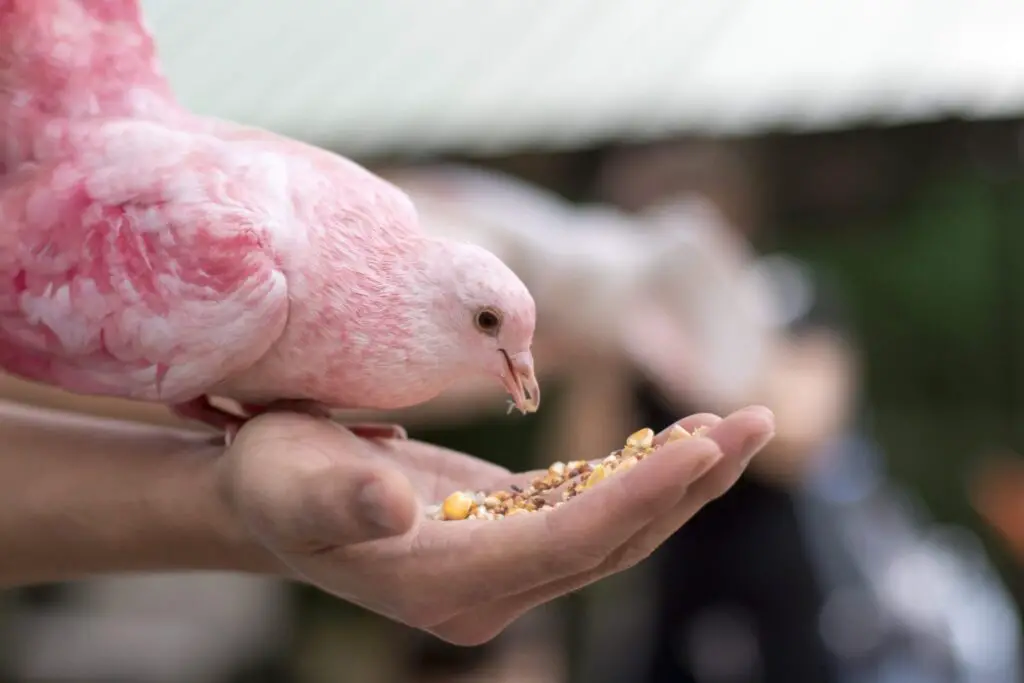
Conclusion
The reality of pink pigeons extends far beyond their rosy plumage, serving as a microcosm of the broader challenges and triumphs in the realm of wildlife conservation. The journey of these unique birds, from the brink of extinction to the ongoing efforts to secure their future, mirrors the delicate dance between human progress and the preservation of biodiversity. The story of pink pigeons is a testament to the resilience of nature and the positive impact that dedicated conservation initiatives can achieve when met with collective determination and awareness.
As we marvel at the existence of pink pigeons, we are prompted to reflect on our role as stewards of the Earth. The plight and recovery of this species underscore the interconnectedness of all life forms and emphasize the responsibility we bear in safeguarding the rich tapestry of ecosystems. Pink pigeons, in their realness, challenge us to consider the broader implications of our actions on the natural world and inspire a renewed commitment to sustainable practices and conservation. Their continued survival is not just a victory for a particular species; it’s a reminder that every effort to preserve biodiversity contributes to the resilience and beauty of our shared planet.
In the grand tapestry of life, where the hues of existence are as diverse as the species that inhabit it, the reality of pink pigeons beckons us to appreciate, protect, and celebrate the wonders of the natural world. As we stand at the intersection of humanity and nature, the story of pink pigeons encourages us to envision a future where our coexistence with the planet is characterized by harmony and a collective commitment to the well-being of all living beings.

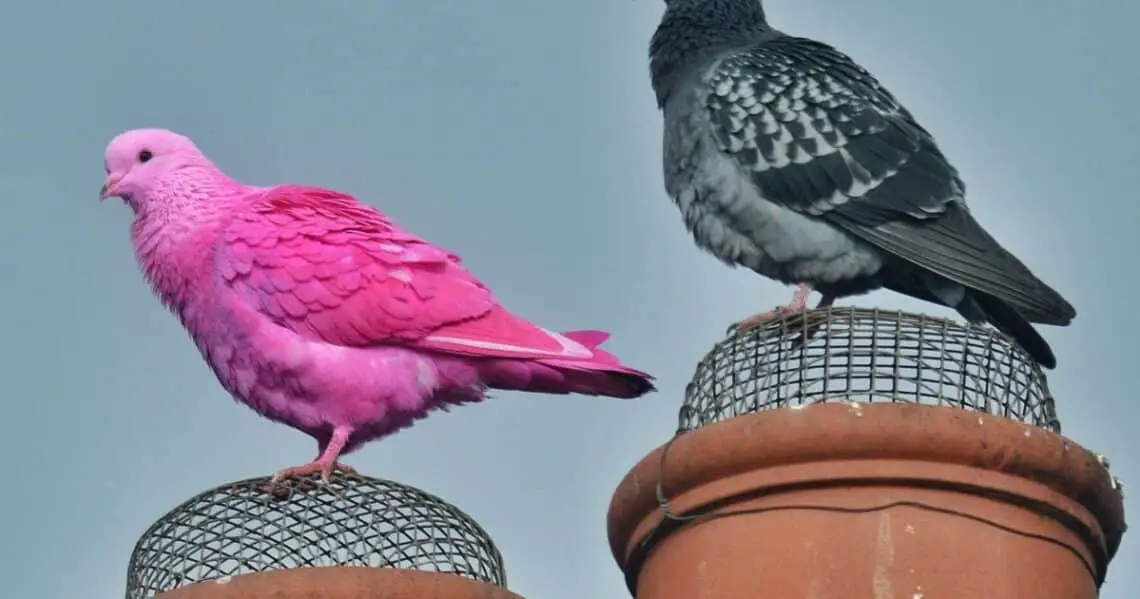
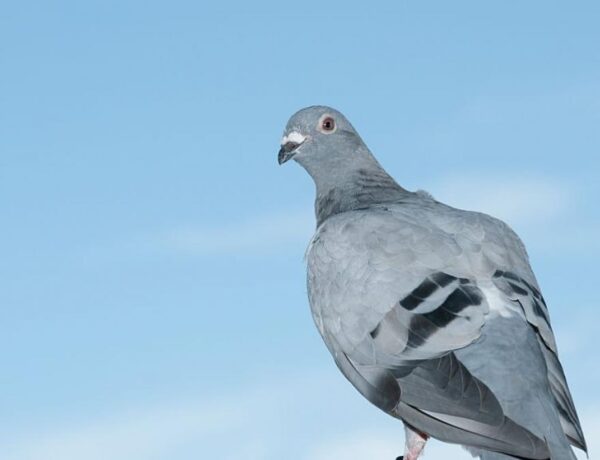
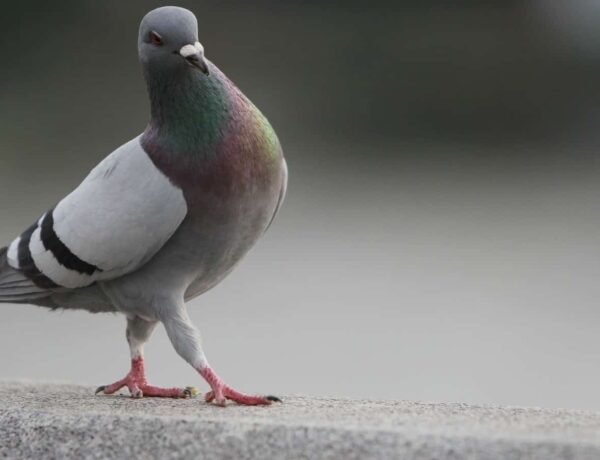
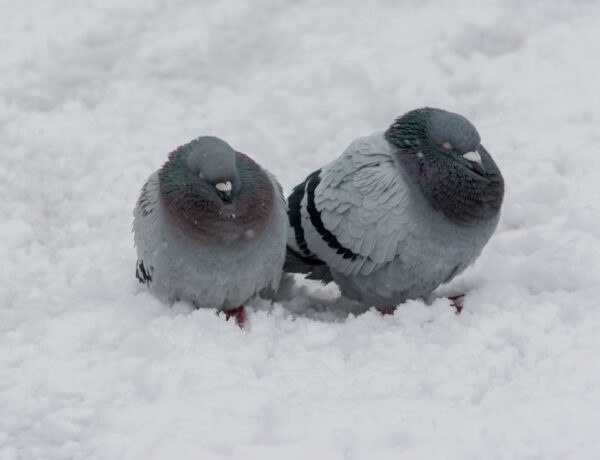
No Comments